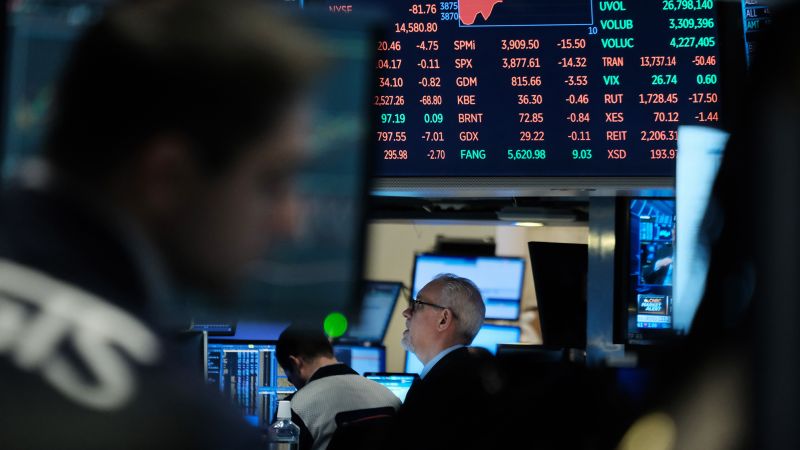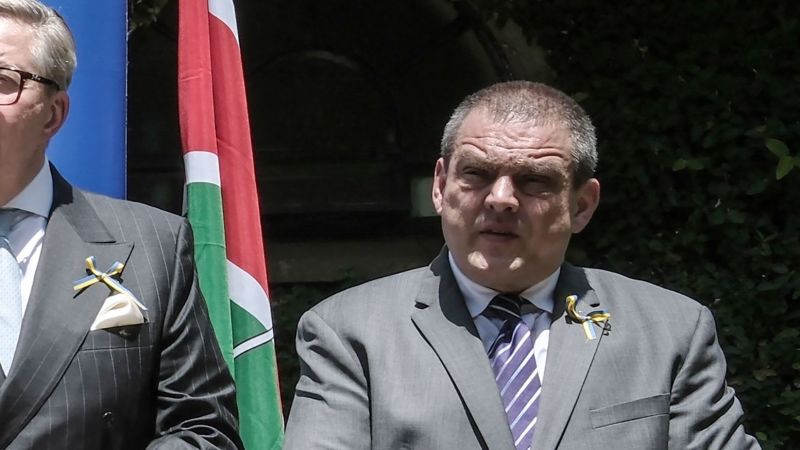What caused the global banking crisis this week and will it lead to a recession?


London
CNN
—
On March 10, the biggest failure of a US bank since the global financial crisis was playing out in real time as a major lender to the tech industry succumbed to a classic bank run.
Silicon Valley Bank’s customers were frantically pulling their money from the California-based lender before US regulators intervened to take control. But the collapse panicked markets, piling pain on weaker financial institutions already struggling with the unintended consequences of soaring interest rates and self-inflicted wounds.
A week on, a second US regional bank — Signature Bank — has been shut down, a third — First Republic Bank
(FRC) — has been propped up, and the first major threat since 2008 to a bank of global financial significance — Credit Suisse — has been averted after it was taken over by UBS.
But the relative calm has been restored only thanks to the provision of huge sums of emergency cash from lenders of last resort — central banks — and some of the industry’s strongest players.
Markets remain on edge: Benchmark indexes of shares in US and European banks have lost 20% and 13% respectively since the close of trading last Wednesday.
Friday, March 10 — The US government’s Federal Deposit Insurance Corporation (FDIC) took control of SVB. It was the biggest banking collapse in America since Washington Mutual in 2008. The wheels started to come off 48 hours earlier when the bank took a multibillion-dollar loss cashing out US government bonds to raise money to pay depositors. It tried — unsuccessfully — to sell shares to shore up its finances. That triggered the panic that led to its downfall.
Sunday, March 12 — The FDIC shut down Signature Bank after a run on its deposits by customers who were spooked by the implosion of SVB. Both banks had an unusually high ratio of uninsured deposits to fund their businesses.
Wednesday, March 15 — After watching shares in Credit Suisse
(CS) collapse by as much as 30%, Swiss authorities announced a backstop for the country’s second-biggest bank. It calmed the immediate market panic but the global player is not out of the woods yet. Investors and customers are worried that it doesn’t have a credible plan to reverse a long-term decline in its business.
Thursday, March 16 — First Republic Bank was teetering on the brink as customers withdrew their deposits. In a meeting in Washington, US Treasury Secretary Janet Yellen and Jamie Dimon, the CEO of America’s biggest bank, drew up plans for a private sector rescue. The result was an agreement with a group of American lenders to deposit tens of billions of dollars of cash into First Republic to staunch the bleeding.
Sunday, March 19 — Switzerland’s biggest bank, UBS, agreed to buy its ailing rival Credit Suisse in an emergency rescue deal aimed at stemming financial market panic.
More than $400 billion so far in direct support. In guaranteeing all deposits at Silicon Valley Bank and Signature Bank, the US Federal Reserve is on the hook for $140 billion. Then there’s the $54 billion the Swiss National Bank offered Credit Suisse in the form of an emergency loan and 209 billion Swiss francs ($225 billion) offered to UBS in loans, guaranteed by the Swiss state, and protection against potential losses.
The Fed has also agreed record amounts of loans to other banks last week. Banks borrowed nearly $153 billion from the Fed in recent days, smashing the previous record of $112 billion set during the crisis of 2008.
Banks also drew on nearly $12 billion of loans from the Fed’s new emergency lending program established at the start of the week with the aim of preventing more banks collapsing.
The $318 billion the Fed has loaned in total to the financial system is about half what was extended during the global financial crisis.
“But it is still a big number,” said JPMorgan’s Michael Feroli in a note to investors Thursday. “The glass half-empty view is that banks need a lot of money. The glass half-full take is that the system is working as intended.”
The banking industry has also coughed up billions. JPMorgan Chase, Bank of America and Citigroup are among a group of 11 lenders providing the $30 billion cash infusion aimed at shoring up confidence in First Republic Bank.
HSBC has reportedly committed more than $2 billion to SVB’s UK business, which it bought on Sunday for £1.
If you have less than $250,000 in an account at a US bank insured by the FDIC, then you almost certainly have nothing to worry about. Joint accounts are insured up to $500,000.
European countries operate similar programs. In Switzerland, up to 100,000 Swiss francs ($108,000) is insured per depositor.
Customers of failed banks in the European Union are promised €100,000 ($105,431) of their deposits back. Joint account holders can receive a combined €200,000 ($210,956) in compensation.
In the United Kingdom, depositors can have up to £85,000 ($102,484) returned if their bank goes under, doubling to £170,000 ($204,967) for joint accounts.
The short answer is yes. Stressed banks will pay much greater attention to the creditworthiness of borrowers, whether they’re businesses looking for loans or home buyers trying to find mortgages.
“If banks are under stress, they might be reluctant to lend,” US Treasury Secretary Janet Yellen said Thursday in testimony to the Senate Finance Committee. “We could see credit become more expensive and less available.”
Christine Lagarde, president of the European Central Bank, told reporters Thursday that “persistently elevated market tensions” could further constrict credit conditions that were already tightening in response to rising interest rates.
Yes, again.
Here’s what Yellen also said to the Senate committee: “That could turn this into a source of significant downside economic risk.”
Goldman Sachs said Wednesday that growing stress in the banking sector has boosted the odds of a US recession within the next 12 months. The bank now believes that the American economy has a 35% chance of entering a recession within a year, up from 25% before the banking sector meltdown started.
The world’s second-biggest economy, China, is also sputtering despite a burst of activity following the rapid ending of draconian Covid lockdown measures late last year.
In a surprise move Friday, the Chinese central bank cut the amount of money the country’s lenders are required to hold in reserve in a bid to keep cash flowing through the economy.
— Anna Cooban contributed to this article.







